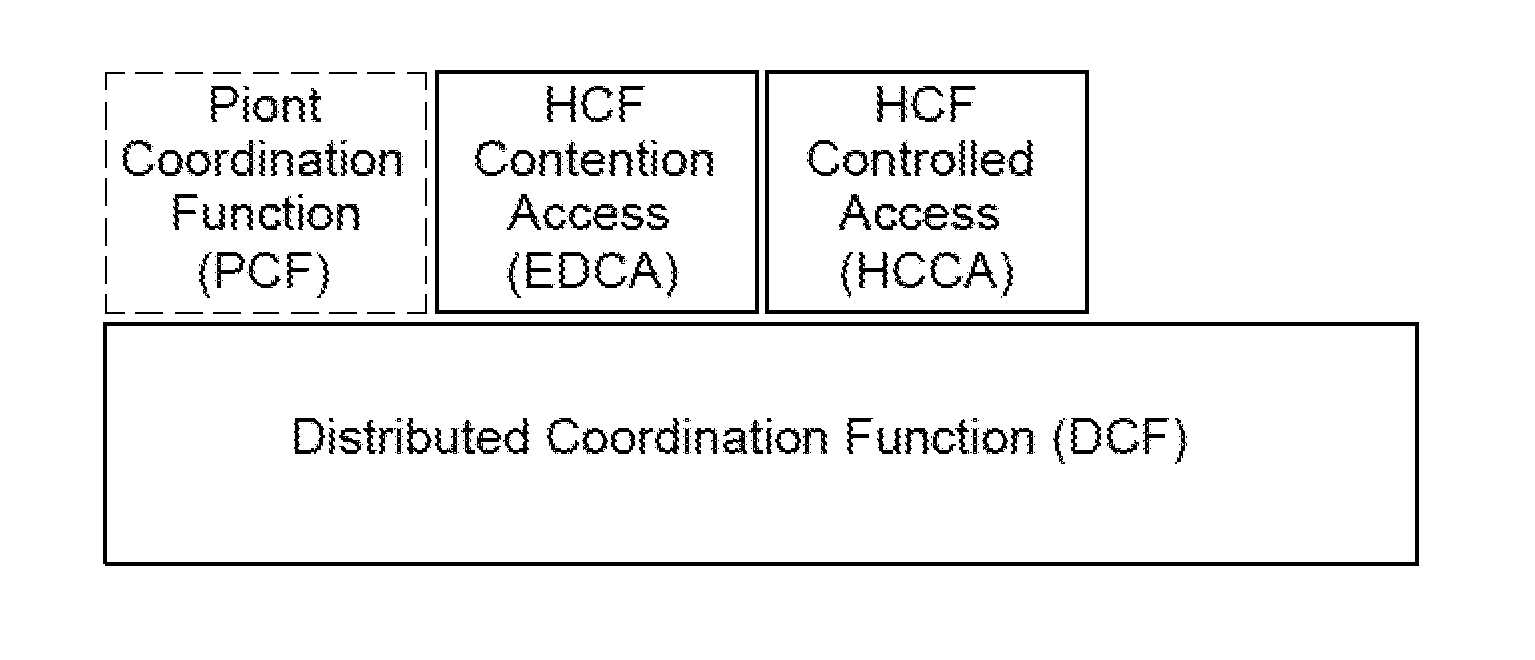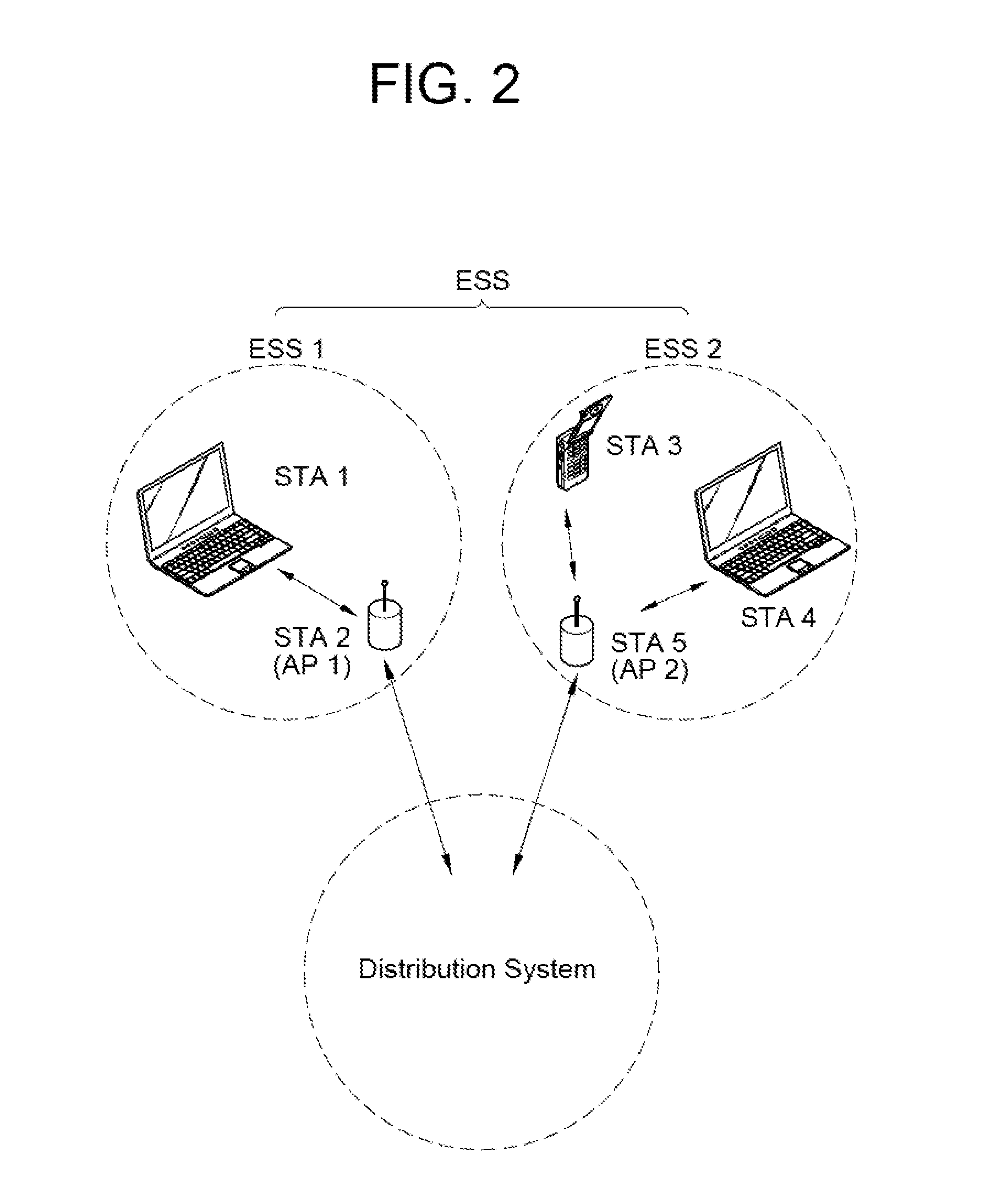Channel access method for very high throughput (VHT) wireless local access network system and station supporting the channel access method
a wireless local access network and channel access technology, applied in the field of channel access mechanism, can solve the problems of increasing additional overhead, short communication distance, and ineffective ieee 802.11n medium access control/physical layer (phy) protocol to provide 1 gbps or more, and achieves high throughput and high throughput. , the effect of improving the utilization efficiency of bonding channels
- Summary
- Abstract
- Description
- Claims
- Application Information
AI Technical Summary
Benefits of technology
Problems solved by technology
Method used
Image
Examples
first embodiment
[0050]FIG. 4 is a diagram showing a channel access mechanism in a VHT WLAN system according to the present invention. In the present embodiment, the conventional channel access mechanism (e.g., enhanced distributed channel access (EDCA) mechanism) is directly used for an entire bonding channel, and it is assumed that a full channel bandwidth is used by only one VHT STA. That is, the entire bonding channel is used to exchange a request to send (RTS) frame, a clear to send (CTS) frame, and data between two VHT STAs performing communication with each other.
[0051]Referring to FIG. 4, a source VHT STA or a transmitting VHT STA, which intends to transmit data, transmits an RTS frame by using the entire bonding channel. In FIG. 4, a process of transmitting the RTS frame is indicated by a physical layer convergence procedure (PLCP) preamble, a PLCP header, and a single PLCP protocol data unit (PPDU).
[0052]Upon receiving the RTS frame, a destination VHT STA or a receiving VHT STA transmits a...
third embodiment
[0064]FIG. 6 is a diagram showing a channel access mechanism in a VHT WLAN system according to the present invention. The present embodiment is an example of a channel access mechanism for preventing collision between VHT STAs in a VHT system in which the VHT STA coexists with a legacy STA or in a VHT BSS in which only the VHT STA exists. Such a channel access mechanism can also be referred to as, for example, frequency-hopping EDCA.
[0065]According to the aforementioned first embodiment, if the legacy STA occupies any one subchannel at a time for transmitting an RTS frame, the VHT STA cannot immediately transmit data or the like by using an entire bonding channel even after the use of the subchannel is finished. That is, only after the legacy STA finishes the use of the subchannel, a procedure of exchanging the RTS frame and a CTS frame can begin. According to the aforementioned second embodiment, the entire bonding channel cannot be used for transmission of data or the like when co...
second embodiment
[0067]Upon receiving the RTS frames from one or more VHT STAs, a destination VHT STA or a receiving VHT STA transmits a CTS frame as a response by selecting one of the received RTS frames, that is, by selecting one VHT STA from the VHT STAs transmitting the RTS frames. In this case, the CTS frame can be transmitted through the entire bonding channel or, as in the aforementioned second embodiment, can be transmitted for each corresponding subchannel. In the latter case, the CTS frame is transmitted for each subchannel through the entire bonding channel instead of using only a subchannel identical to the subchannel in which the selected RTS frame is transmitted. In addition, according to the present embodiment, the VHT STA which has received the CTS frame, i.e., the destination VHT STA of the CTS frame, uses the entire bonding channel when intending to transmit data or the like in a subsequent procedure.
[0068]Referring to FIG. 6, source VHT STAs or transmitting VHT STAs (indicated by ...
PUM
 Login to View More
Login to View More Abstract
Description
Claims
Application Information
 Login to View More
Login to View More - R&D
- Intellectual Property
- Life Sciences
- Materials
- Tech Scout
- Unparalleled Data Quality
- Higher Quality Content
- 60% Fewer Hallucinations
Browse by: Latest US Patents, China's latest patents, Technical Efficacy Thesaurus, Application Domain, Technology Topic, Popular Technical Reports.
© 2025 PatSnap. All rights reserved.Legal|Privacy policy|Modern Slavery Act Transparency Statement|Sitemap|About US| Contact US: help@patsnap.com



